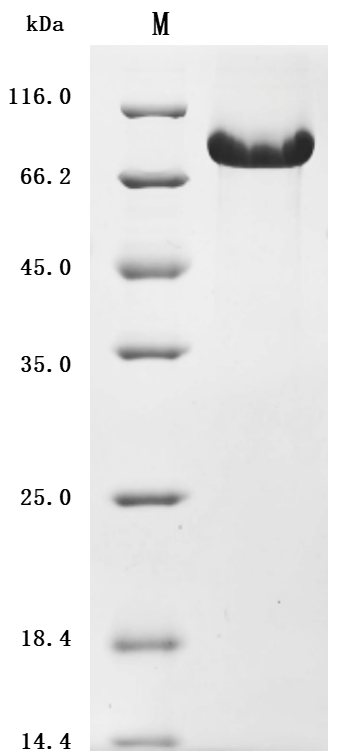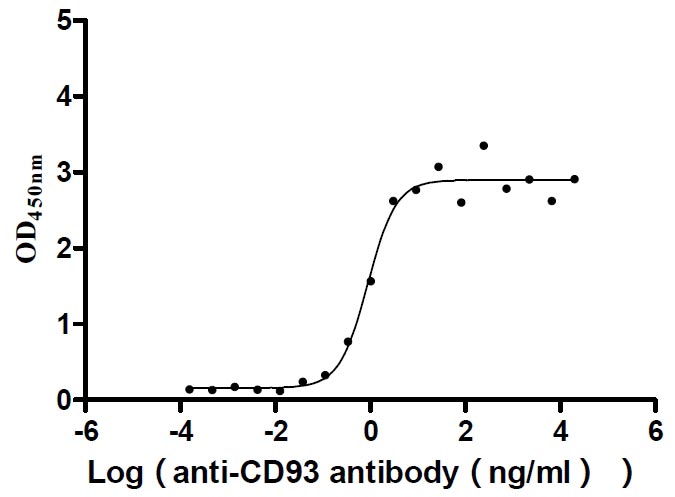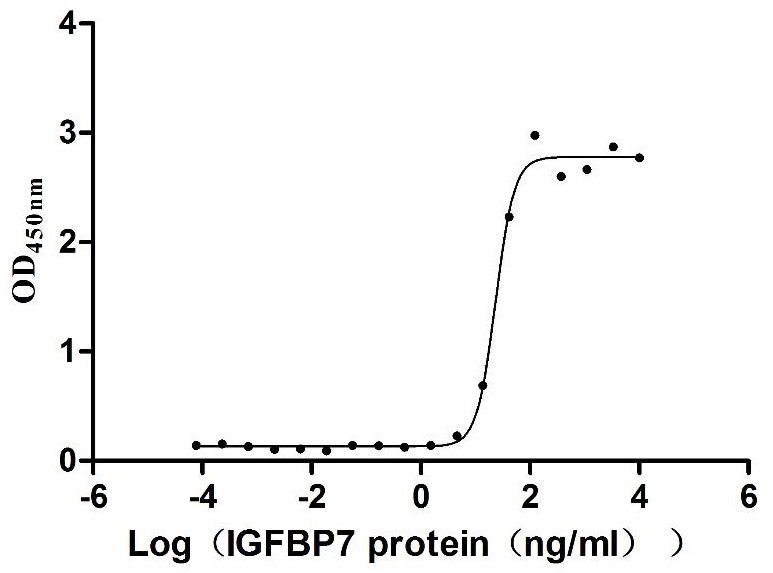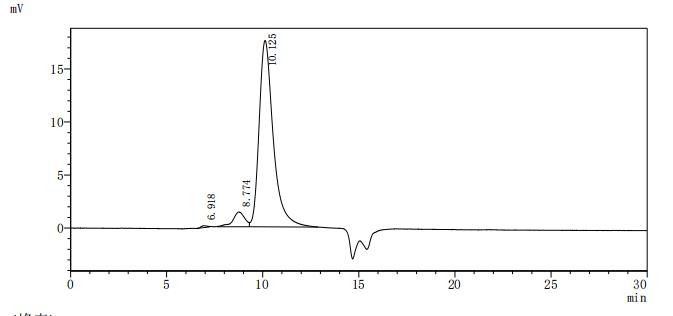CD93, also called complement component 1, q subcomponent receptor (C1qRp), is a protein found on the surface of different cell types like endothelial cells, white blood cells, and stem cells [1][2]. It's involved in lots of important jobs in the body, including helping blood vessels grow, controlling inflammation, and cleaning up dead cells [3][4][5][6][7][8][9][10][11][2]. In cancer, CD93 seems to help blood vessels form in tumors by organizing cells and structures within them [3]. It's also important in diseases like age-related macular degeneration, where it affects inflammation and blood vessel growth in the eye [8][7]. CD93 even helps clear away dead cells by shedding a part of itself, acting as a signal for other cells to come and clean up [5][12]. Plus, it's involved in the process of cells engulfing and digesting other cells, and it interacts with certain proteins to help regulate this process [11]. In development, CD93 seems to have a say in how certain cells grow and stick together [6][10]. Overall, CD93 is a potential target for treatments that aim to stop blood vessel growth in diseases like pancreatic cancer [13].
References:
[1] S. Bohlson, R. Silva, M. Fonseca, & A. Tenner, "Cd93 is rapidly shed from the surface of human myeloid cells and the soluble form is detected in human plasma", The Journal of Immunology, vol. 175, no. 2, p. 1239-1247, 2005. https://doi.org/10.4049/jimmunol.175.2.1239
[2] N. Ikewaki, J. Kulski, & H. Inoko, "Regulation of cd93 cell surface expression by protein kinase c isoenzymes", Microbiology and Immunology, vol. 50, no. 2, p. 93-103, 2006. https://doi.org/10.1111/j.1348-0421.2006.tb03774.x
[3] R. Lugano, K. Vemuri, D. Yu, M. Bergqvist, A. Smits, M. Essandet al., "Cd93 promotes β1 integrin activation and fibronectin fibrillogenesis during tumor angiogenesis", Journal of Clinical Investigation, vol. 128, no. 8, p. 3280-3297, 2018. https://doi.org/10.1172/jci97459
[4] E. Langenkamp, L. Zhang, R. Lugano, H. Huang, T. Elhassan, M. Georganakiet al., "Elevated expression of the c-type lectin cd93 in the glioblastoma vasculature regulates cytoskeletal rearrangements that enhance vessel function and reduce host survival", Cancer Research, vol. 75, no. 21, p. 4504-4516, 2015. https://doi.org/10.1158/0008-5472.can-14-3636
[5] J. Blackburn, D. Lau, E. Liu, J. Ellins, A. Vrieze, E. Pawlaket al., "Soluble cd93 is an apoptotic cell opsonin recognized by αxβ2", European Journal of Immunology, vol. 49, no. 4, p. 600-610, 2019. https://doi.org/10.1002/eji.201847801
[6] Q. Liang, L. Su, D. Zhang, & J. Jiao, "Cd93 negatively regulates astrogenesis in response to mmrn2 through the transcriptional repressor zfp503 in the developing brain", Proceedings of the National Academy of Sciences, vol. 117, no. 17, p. 9413-9422, 2020. https://doi.org/10.1073/pnas.1922713117
[7] S. Trivigno, "The c-type lectin receptor cd93 regulates platelet activation and surface expression of the protease activated receptor 4", Thrombosis and Haemostasis, vol. 124, no. 02, p. 122-134, 2023. https://doi.org/10.1055/a-2166-5841
[8] G. Tosi, E. Caldi, B. Parolini, P. Toti, G. Neri, F. Nardiet al., "Cd93 as a potential target in neovascular age‐related macular degeneration", Journal of Cellular Physiology, vol. 232, no. 7, p. 1767-1773, 2016. https://doi.org/10.1002/jcp.25689
[9] B. Wu, L. Fu, X. Guo, H. Hu, L. Yang, Y. Shiet al., "Multi-omics profiling and digital image analysis reveal the potential prognostic and immunotherapeutic properties of cd93 in stomach adenocarcinoma", Frontiers in Immunology, vol. 14, 2023. https://doi.org/10.3389/fimmu.2023.984816
[10] M. Zhang, S. Bohlson, M. Dy, & A. Tenner, "Modulated interaction of the erm protein, moesin, with cd93", Immunology, vol. 115, no. 1, p. 63-73, 2005. https://doi.org/10.1111/j.1365-2567.2005.02120.x
[11] S. Bohlson, M. Zhang, C. Ortiz, & A. Tenner, "Cd93 interacts with the pdz domain-containing adaptor protein gipc: implications in the modulation of phagocytosis", Journal of Leukocyte Biology, vol. 77, no. 1, p. 80-89, 2004. https://doi.org/10.1189/jlb.0504305
[12] B. Jw, L. Dh, J. Ellins, A. Kipp, P. En, D. Jdet al., "Soluble cd93 is an apoptotic cell opsonin recognized by the αxβ2integrin",, 2018. https://doi.org/10.1101/341933
[13] H. Zhang, Z. Dai, Y. Liao, C. Yan, B. Zhao, T. Liuet al., "Cd248(tem1/cd164l1/endosialin): a new molecular target for anti-angiogenic therapy in pancreatic ductal adenocarcinoma",, 2021. https://doi.org/10.21203/rs.3.rs-217476/v1










